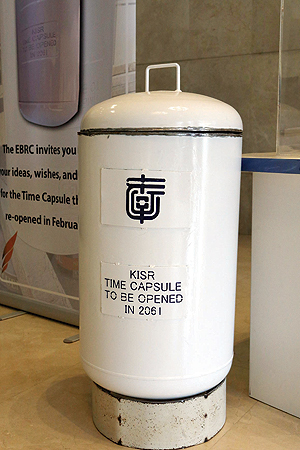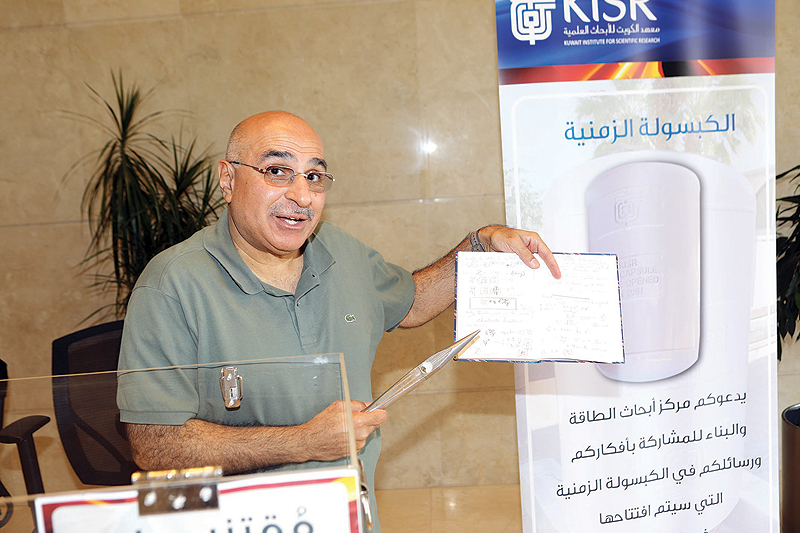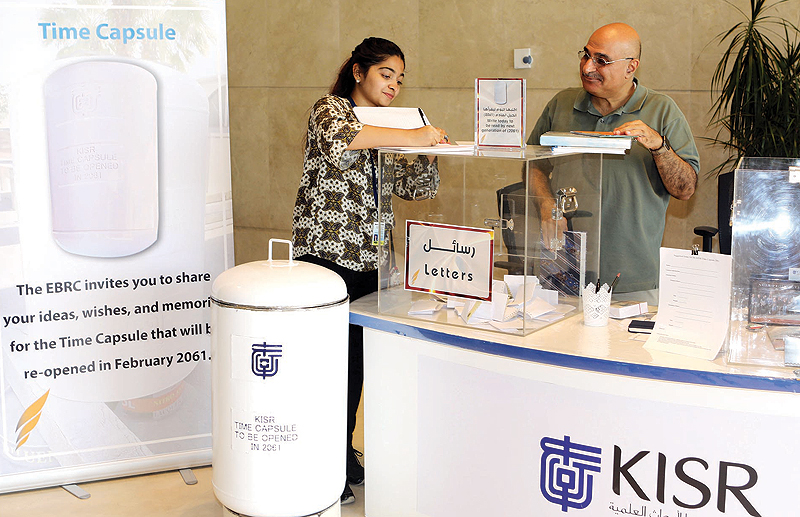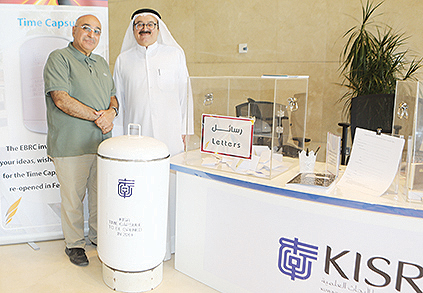
To commemorate the beginning of a new era of renewable energy in Kuwait, the Kuwait Institute for Scientific Research (KISR) will bury a time capsule to be opened in 42 years. The capsule will store the work routines and aspirations of contributors from KISR along with cultural and technological souvenirs from this era for the next generation. The year 2061 was chosen as it marks 100 years of Kuwait's independence.
"When the first power plant was built in Shuwaikh in 1952, it was among the world's biggest power plants, and yet there is very little that we know about the people behind the scenes and their workings. The human element behind it all was missing. Today, technology has evolved beyond measure and it is our duty to preserve what we can, so that our future generations can learn about our lives, 42 years from now," said Eng. Ala'a Ismail, Senior Research Associate at Kuwait Institute of Scientific Research (KISR).

The Time Capsule 2061 is made from a repurposed old tank that will be buried in Shagaya Park. It contains KISR publications, local newspapers, personal letters and drawings, an SD card, KISR medallion, pictures, brochures, a notebook supporting a prototype created to detect oil contamination, floppy disk, 2061 calendar with astronomical events, coins contributed by the Central Bank of Kuwait, GPS that was used during the building of Shagaya Park, toys, a meteoroid from 1576 and a Kuwaiti Flag.

All the items will be preserved for the next 42 years with silica along with seeds and materials created by the different department of KISR. Kuwait Times is among the newspapers that are a part of the time capsule.
The Shagaya Renewable Energy Park is a monumental step for Kuwait as it walks toward a greener future. Kuwait's New Vision strategic development plan envisions that 15 percent of Kuwait's energy will be generated by green energy by the year 2035.

Link to the past
"To understand the inspiration behind it all we will have to take a look at the past which will help us make an educated guess about the future," added Eng. Ismail. "Forty two years ago, the world saw the launch of the first space shuttle, the invention of the digital camera and many ground breaking innovations that changed our future forever. We can only hope that in 2061, when half of the things will cease to exist because of technological advancement, the world will be able to remember 2019 through these small tokens," he said.
The concept of a time capsules isn't new. In 1939, the Westinghouse Company in New York created their first time capsule to be buried for 5,000 years while in 1968, Japanese companies Panasonic Corporation and The Mainichi Newspapers in celebration of the Japan World Exposition 1970: EXPO '70 created two time capsules identical in every detail which were buried near Osaka Castle. The lower capsule was buried for 5,000 years while the upper capsule will be opened for in 2,000 years and every 100 years thereafter for people to share their contributions after every century.
"The capsule will contain a black and white film with pictures and videos of how the capsule was developed with a hope that the future generation will continue the art of preservation. The future is scary, it is unknown. All we can do is hope for it to be much better than it is today," concluded Eng. Ismail.
By Ramona Crasto










